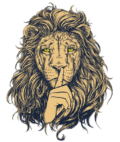Personification is a literary device used my writers to give human traits to non-human this. If incorporated into writing, personification can create vivid scenes and bring even “boring” inanimate objects to life.
In this resource, you’ll learn more about personification, explore examples of personification, and learn how to use it it in your own writing.
What is Personification?
Personification Definition: Personification gives human traits, characteristics, and emotions to non-human things. This literary device allows writers to enhance the setting and general surrounds in their stories and helps readers to more easily imagine fictional spaces.
Animals and even objects can be personified to bring scenery, stories, objects, or poems to life.
Personification Examples
Disney’s Beauty and The Beast
Can you imagine what this Disney classic would be like without the talking plateware? Absolutely not.
Belle would have been in a lonely and quiet castle. Without the coaxing of Lumiere and Cogsworth, Belle may have never given the Beast a chance. Not only are objects personified in this piece, but their personification plays a key role in the plot.
The Mirror by Sylvia Plath
i am silver and exact. I have no preconceptions.
Whatever I see I swallow immediately
Just as it is, unmisted by love or dislike.
I am not cruel, only truthful ‚
The eye of a little god, four-cornered.
In the poem above, a mirror is the narrator. Plath gives this object the “I” pronoun, personifying it immediately. Plath goes on to say that the mirror calls itself truthful, a uniquely human characteristic. Additionally, throughout this short piece, the mirror “swallow(s)” and is “not cruel” – two other human traits.
Pixar’s Inside Out
Inside Out is a Pixar animated film that personifies the main character’s emotions.
In the film, Anger, Fear, Disgust, Sadness, and Joy are characters themselves with a range of emotions. As Riley, the human character with these emotions navigates big changes in her life, viewers see the personalities of her emotions.
How to Use Personification in Your Writing
Regardless of the genre you’re writing in, you can use personification.
In the examples above, you can see that personification was used in a film script and a short poem, demonstrating the versatility of this literary device.
If you’re struggling with how to personify things, follow these steps to get started:
- Identify what you want to personify (object, animal, etc.)
- Consider the qualities this thing might have. Make a list.
- Revaluate – do your qualities match with your object? For example, the sun might not “send cold” but it could “send a warm hug.”
- Write it out and read it aloud. Personification should make your writing feel more alive, after all, you are infusing it with human traits!
Personification Exercise
Here is a list of 5 inanimate objects: bucket, hat, watch, water, fire.
Create a list of human traits or things that humans do. Be exhaustive. A few examples include, talking, smiling, and yelling.
Now, write a sentence giving a human trait to one of the inanimate objects.
Here’s are my examples:
- The bucket stood at the top of the stairs, reminding me to do my chores.
- The dirt on the hat told me it has been places, seen things.
- The watch hummed with each passing second, demanding that I hurry.
- The water lapped at my ankles, as if it was saying “welcome home.”
- I was welcomed by a fire’s hug after a long day working in snowy conditions.
Mastering personification takes practice. Adopt the above exercise into your routine – who knows what you’ll come up with.
Ready to Use Personification?
I hope you feel like you can get started using personification in your writing. It’s a truly fun literary device, and can make even stale elements of writing more fun to write and even more entertaining to read.
Excited about something you’ve written? Submit to From Whispers to Roars.
